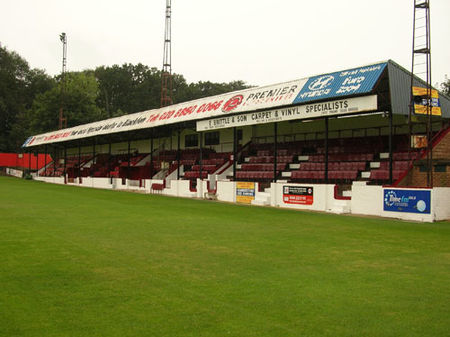Park View Road
Buildings and structures in the London Borough of BexleyErith & Belvedere F.C.Football venues in EnglandLondon sports venue stubsSport in the London Borough of Bexley ... and 4 more
Sports venues completed in 1925Sports venues in LondonTourist attractions in the London Borough of BexleyWelling United F.C.

Park View Road is home to National League South semi-professional football club Welling United, and was the ground of their predecessors Bexley United. Welling have played there since 1977. It is also the home of Erith & Belvedere who have been ground sharing since the 1999 season. The ground takes its name from a section of the A207 road in Welling, immediately adjacent to Danson Park.
Excerpt from the Wikipedia article Park View Road (License: CC BY-SA 3.0, Authors, Images).Park View Road
Denham Close, London Welling (London Borough of Bexley)
Geographical coordinates (GPS) Address External links Nearby Places Show on map
Geographical coordinates (GPS)
| Latitude | Longitude |
|---|---|
| N 51.460316666667 ° | E 0.11651388888889 ° |
Address
Park View Road
Denham Close
DA16 1SX London, Welling (London Borough of Bexley)
England, United Kingdom
Open on Google Maps





